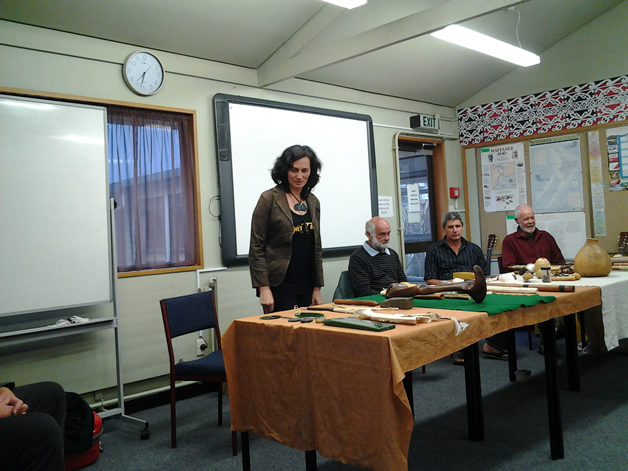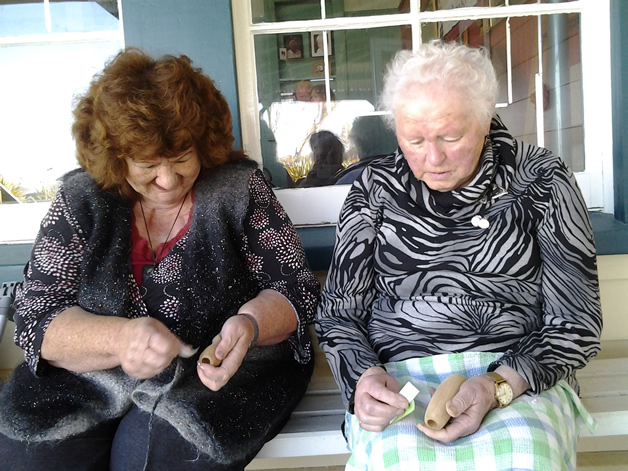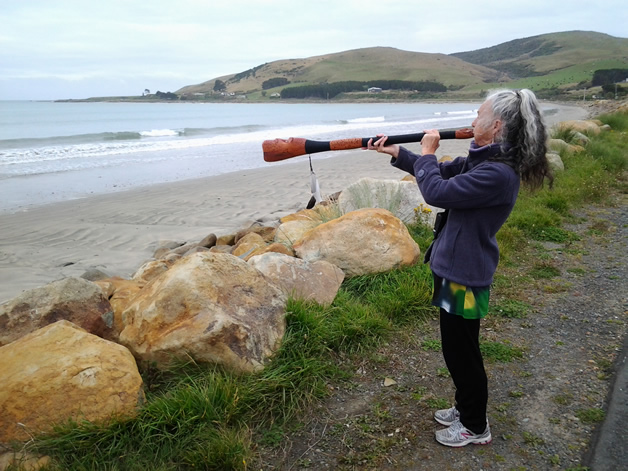Voices from the past
Ngā manu were the only ones who stirred early at Ōraka Aparima’s Takutai o te Tītī Marae, when whānau got together for a weekend of traditional music and learning in March.
Everyone had slept soundly after concentrating hard and putting a great effort into learning and up-skilling on traditional Māori instruments, bringing beautiful voices, tuku iho, back to our southern marae.
The world’s best exponent of taonga pūoro, Richard Nunns, played on instruments made by Brian Flintoff of Colac Bay, and Ariana Tikao performed waiata with players from Te Papa, Ōtautahi and Wairewa. These musicians brought us the singing flutes of Hineraukatauri and Hineputehue, the children of Tāne, the sounds of Tangaroa and Tawhirimatea, and the tunes and rhythm from the heartbeats of Ranginui and Papatūānuku, who sang the instruments into existence.
The weekend began with a showcase celebration of taonga pūoro at a public performance in Murihiku, and continued with a pōwhiri at Takutai o te Tītī, where four powerful voices, trumpets, conch shell, pūkāea and pūtātara, called the manuhiri to start the wānanga. It was the first time in living memory that these sounds had been heard at Takutai o te Tītī.
After the pōwhiri, work began in earnest, with beginners starting on simple bamboo kōauau. Getting any sound is not easy and the gap between getting a noise and actually playing kōauau is wide. But the tutors were on hand to guide and encourage. When they could get that elusive first sound, the tauira graduated to a wooden kōauau and they had the gift of having master carver Brian Flintoff, add the whakairo. Some had chosen kōauau (flute), others chose porotiti (humming disk), or karanga weka ( bird call); the choice was theirs, and as Taua Muriel Johnson put it, they had the immense satisfaction of making the instrument of choice themselves, and they came away with a taonga that in time will be he taonga iku iho.
During a second pōwhiri that day, the taonga pūoro were played again, as two classical wind musicians and nationally-known pianist, Deidre Irons – on tour around New Zealand – were welcomed on. What a treat it was for them to hear and see our traditional flutes, and in return, for the hui to hear the beautiful classical flute solo played by Rebecca Steele.
Later, a memorial service to remember the victims of the Easy Rider boating tragedy, was held on the beach at Ōraka. It was the third time that weekend that taonga pūoro were played, in what we think could have been tikanga before the common use of taonga pūoro was almost lost over a century ago. The players chose the gentler sweet voices of the kōauau, the nguru and the nose flute kōauau ponga ihu; it was a privilege to be among the whānau whānui on such a special occasion.
Back on Takutai, local stone expert, Russell Beck demonstrated working with our beautiful green argillite.
Saturday night and it was show time again, with Alister Fraser showing us the many taonga pūoro he had made on Rakiura, from materials found on the island – wood, stone, shell, flax, and bone. Ariana Tikao performed original songs and the instruments sang with her.
We hope the wānanga is the beginning of a return for the taonga pūoro down south ─ the start of a life-long journey for players with the passion and commitment to preserve these taonga. Judging by questionnaire comments and the progress made, taonga pūoro will again be heard on the marae and not left lying silent and locked in glass museum cases.
Our grateful thanks to Tāua Betty Rickus and Lydia Matenga, who organised all the beautiful kai; and to the Ngāi Tahu Fund and Whānau o Ōraka Aparima. Tēnā koutou, tēnā koutou, tēnā koutou katoa.

Left to right: Ariana Tikao, Brian Flintoff, Tony Smith and Geoff Low showcasing the instruments.

Muriel Johnstone (left) and Jane Davis working on their own kōauau.

Hikatea Bull tries out a pūkāea on the beach.